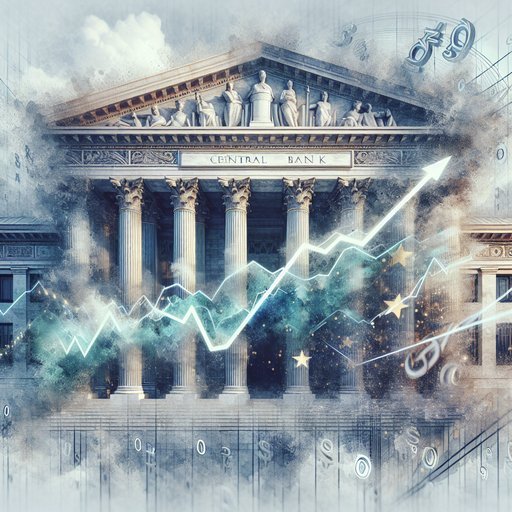
In a bold move, the European Central Bank (ECB) slashed its key interest rate by 50 basis points earlier this week, catching global markets by surprise. The decision came as a direct response to sluggish economic indicators across the eurozone and hopes of boosting economic activity. While Europe acted decisively, the U.S. Federal Reserve held interest rates steady amid concerns over lingering inflation risks and economic uncertainty caused by domestic tariffs. Federal Reserve Chair Jerome Powell assured the market that they were closely monitoring developments but saw no immediate need for rate cuts. Investors worldwide are now closely watching how these divergent approaches unfold.
The ECB's decision to cut rates is seen as an aggressive attempt to stimulate growth within the eurozone as it battles persistent low inflation and stagnating economic growth [1]. This move distances itself from the more cautious stance adopted by the Federal Reserve, which has decided to take a wait-and-see approach [2]. ECB's action showed its willingness to act proactively, targeting enhanced liquidity and encouraging lending activities, crucial for economic recovery in the bloc. In contrast, the Federal Reserve, led by Chair Jerome Powell, maintained its current interest rate, reiterating a focus on monitoring inflation trends and the broader U.S.
economy [3]. Powell's recent testimony highlighted the Fed's concern about domestic price pressures and international trade dynamics affected by new tariffs [4]. Fundamentally, the Fed’s steady rates reflect its strategy to assess ongoing economic indicators before making any adjustments to monetary policy. Market reactions, however, show mixed sentiments.
European markets responded positively to the ECB's stimulus, with stocks rallying as investors anticipated increased business activity and consumer spending [5]. Conversely, U.S. markets remained fairly muted, as stakeholders adjusted expectations around potential future Fed actions. The uncertainty has kept futures relatively unchanged, and investors are now closely monitoring upcoming economic reports that could influence Fed policymakers' decisions.
Despite these differences, global investors are recognizing the significant shifts in monetary strategies and the impact they may have on currency and asset valuations. Cryptocurrency markets showed resilience amidst these policy changes, with Bitcoin and others witnessing stable pricing environments buoyed by corporate interests [6]. Traders and analysts are now eagerly anticipating future policy reviews and international trade developments that might prompt synchronized or divergent decisions from central banks around the world [7].
Sources
- Tom Lee On Why Fed's Holding Back While Europe Eases Aggressively: 'That's The Upside Opportunity Into Year End' (Biztoc.com, 2025-06-25)
- Rep. Pettersen brings baby son along as she questions Fed chairman at hearing (ABC News, 2025-06-24)
- Stocks rise after ceasefire between Israel and Iran, even as Fed Chair Jerome Powell holds off on rate cuts (Yahoo Entertainment, 2025-06-24)
- Trump Unloads on Fed Chair Over Tanking U.S. Economy (The New Republic, 2025-06-24)
- S&P Futures Muted With Focus on Powell’s Testimony (Barchart.com, 2025-06-25)
- Bitcoin, Dogecoin Hold Gains While Ethereum Drops (Biztoc.com, 2025-06-25)
- ‘Buckle Up’—Bitcoin And Crypto Brace For A Huge Fed Flip, Predicted To Spark A Price Boom (Forbes, 2025-06-24)
























